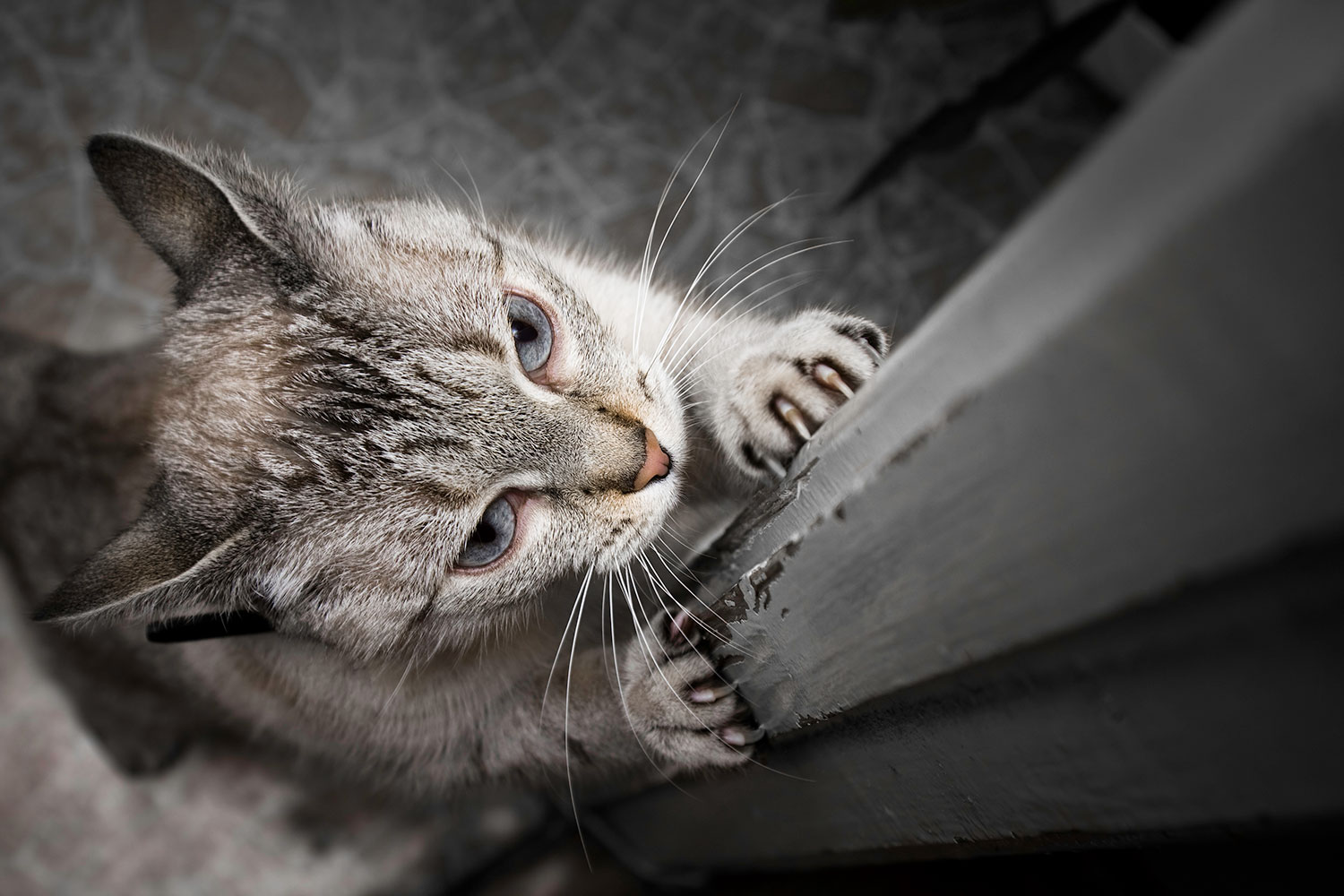How Can I Fix My Cat’s Behavior Problems?

Cats are mysterious creatures and understanding their behaviors can be a challenge. But, if your feline friend’s behaviors are frustrating, irksome, or downright dangerous, knowing the reason behind the action is key to effective management. Preserve the bond you share with your cat by learning to identify and manage common feline behavior problems.
Feline inappropriate elimination
Inappropriate elimination is a common complaint among cat owners and can be frustrating to manage. This problem can be caused by a range of medical, behavioral, and environmental factors, such as:
- Feline idiopathic cystitis (FIC)
- Urinary tract infections (UTIs)
- Urinary crystals or stones
- Kidney disease
- Diabetes
- Osteoarthritis
- Stress
- Bullying between cats
- Poor litter box management
- Litter box aversion
The first step in combating feline inappropriate elimination is scheduling an appointment with your AAHA-accredited veterinarian to rule out any medical causes. However, while a medical cause may be at the root of your cat’s problem, they may have also developed a behavioral component to litter box avoidance, so complete resolution often requires multiple techniques. These may include:
- Improved litter box hygiene — Scoop litter boxes at least daily, if not more frequently. Regularly wash boxes with mild soap and water, but don’t use strong-scented detergents. Once the boxes are clean, refill them with one to two inches of a fine, granular, unscented litter.
- Repositioned litter boxes — If their litter boxes aren’t in quiet, low-traffic, easily accessible areas, your cat may find a more preferable location. Place a box on each floor of your home to ensure your cat has immediate access wherever they are.
- New litter boxes — Your cat may simply not like their litter boxes anymore, as old litter boxes can retain odors and senior cats may struggle to climb over tall sides. Cats generally prefer large, shallow, uncovered boxes that are one and a half times their nose-to-tail length.
- Increased environmental enrichment — Reduce your cat’s stress and boredom with more environmental enrichment opportunities, which can solve many behavioral problems. Offer your cat plenty of scratching posts, climbing towers, hiding spots, interactive toys, and puzzle feeders.
Destructive scratching in cats
Scratching is a natural feline behavior that requires various outlets to ensure your cat is happy, healthy, and fulfilled. Without easily accessible, appropriate scratching surfaces, your cat will find their own scratching posts and pads—which probably won’t meet with your approval. Excessive or inappropriate scratching can also be triggered by stress, boredom, or territorial marking.
Encourage your cat to scratch in acceptable spots by:
- Providing a variety of scratching surfaces — Cats generally prefer sisal material to sink their claws into, but your cat may also like wood, corrugated cardboard, or carpet remnants. Provide posts, towers, and angled pads made with these materials, ensuring they are stable and secure so your cat can safely scratch.
- Considering careful placement — Position acceptable scratching surfaces near your cat’s resting areas, by windows and doors, and in front of already-clawed furniture. Encourage them to scratch on appropriate materials by rewarding them with high-value treats and petting whenever they do.
- Practicing regular nail care — Help your cat maintain their claws with regular trimming, as scratching removes broken nail fragments and worn nail sheaths.
Aggression in cats
Feline aggression often can be pointed toward other household cats or to human family members and can be chalked up to:
- Lack of positive socialization early in life
- Crowded territories
- Inadequate resources
- Conflicting personalities
- Pain (e.g., osteoarthritis, dental disease, abscess)
- Overstimulation or frustration
- Excessive petting
Cats may also redirect their aggression when they are aroused or agitated and can’t reach the source of their frustration. For example, if your cat is intent on a bird or stray cat outside the window and you approach, they may lash out at you.
Create a harmonious household by eliminating factors that may induce aggression in your cat through:
- Providing separate resource stations — Cats don’t like to share, so provide each household cat with their own resources in separate areas. Set up food, water, litter boxes, scratching posts, and resting spots, so each cat has their own private territory.
- Scheduling wellness visits — Regular wellness care can help detect hidden health issues that may be causing your cat’s behavioral changes. Dental disease, infections, or painful conditions can be identified early during routine exams and treated, ensuring your cat is healthy and comfortable.
- Reading feline body language — Understanding when your cat has had enough interaction is important so that you know when to stop petting or to remove another pet or person from the situation. A twitching tail, flattened ears, dilated pupils, and restlessness are warning signs that your cat is reaching their limit.
Patience and consistency are key when addressing cat behavior problems, so don't be discouraged by slow progress. However, if your feline friend isn’t showing signs of improvement or progression, turn to your AAHA-accredited veterinarian for help.



